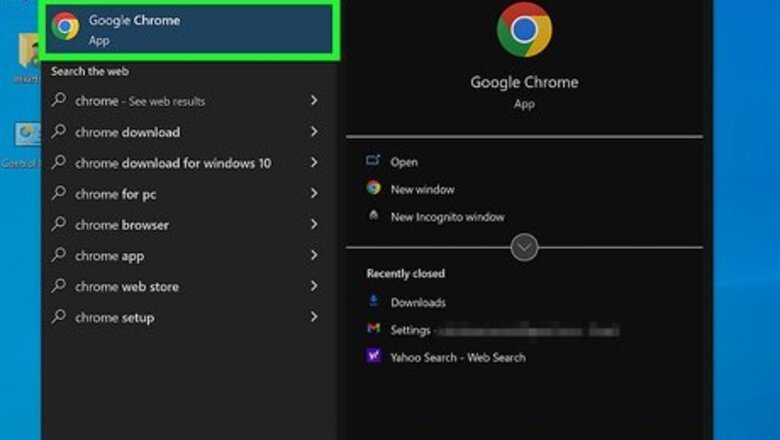
views
- Google "what is my IP address." Google will show your IP address at the top of the search results.
- Alternatively, use a website like https://whatismyipaddress.com/ to find your IP address.
- You can also find your IP address in your computer settings. Go to "Settings," "Network & Internet," "Wi-Fi," then "Hardware Properties."
Find Your Public IP Address Using Google
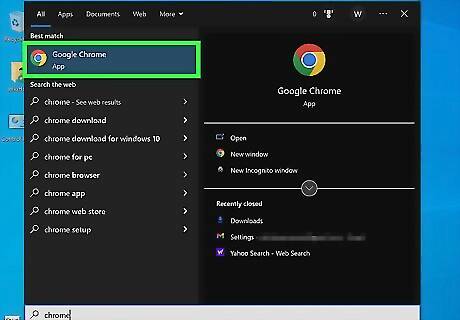
Open a web browser. The IP address you'll find with this method is your public IP address which is assigned to you by your internet service provider (ISP).Tip: If you're using your computer behind a router or wireless access point, your local IP address will be different than your public IP address. See one of the methods to find out your local IP address.
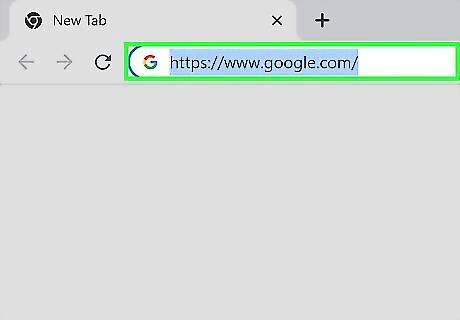
Navigate to https://www.google.com. You can use Google to find your IP address just as easily as you can use it to find other information.
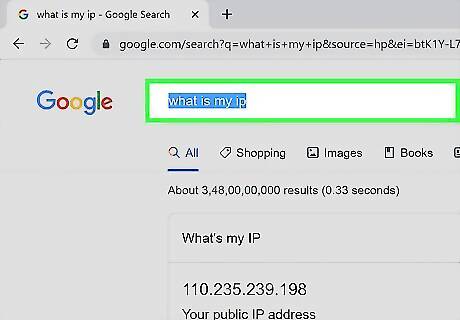
Type what is my ip and press ↵ Enter. Your IP address will now appear at the top of the search results above "Your public IP address." It looks like four groups of up to three numbers, separated by periods, such as 10.0.0.1.
Find Your Public IP Address Using a Website
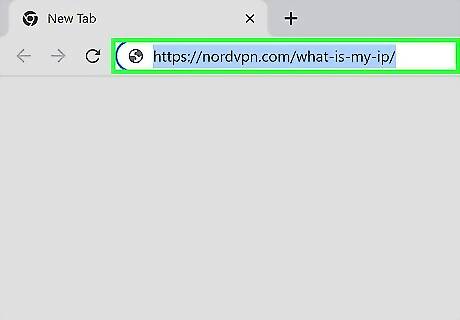
Navigate to an IP address checker website. There are many online tools you can use to check your public IP address. Go to any one of these websites in your web browser. The following are a couple of websites you can use to check your public IP address: https://whatismyipaddress.com/ https://nordvpn.com/what-is-my-ip/ https://www.whatismyip.com/ https://www.iplocation.net/find-ip-address
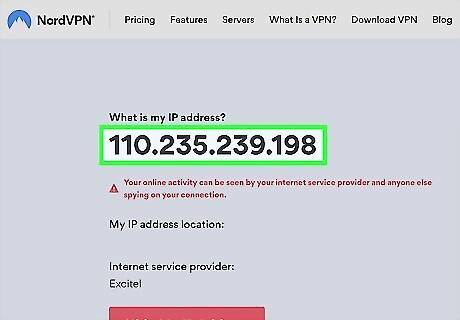
Check your public IP address. Your IP address looks like four groups of numbers separated by periods (i.e, 10.0.0.1). The website should detect your IP address automatically. It will be listed next to "IPv4 address" or "IPv6 address."
Find Your Local IP Address Using the Windows Settings Menu
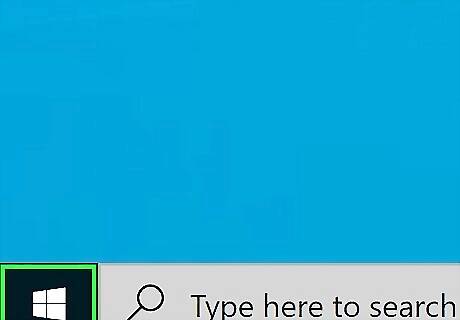
Click the Windows Start menu Windows Start. It's the icon with the Windows logo in the taskbar at the bottom of the screen. You can use the Windows Settings menu to find your private IP address. If you want to check your local IP address on a Mac, you can do so using the Network menu in System Preferences. You can also find your IP address on other internet-connected devices.
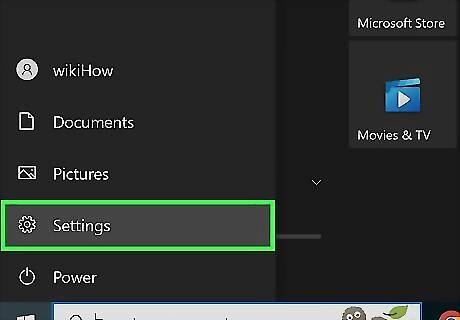
Click Settings. It's next to the gear icon. On Windows 10, it's in the sidebar to the left of the Windows Start menu. On Windows 11, it's listed in the list of pinned apps at the top of the Windows Start menu.
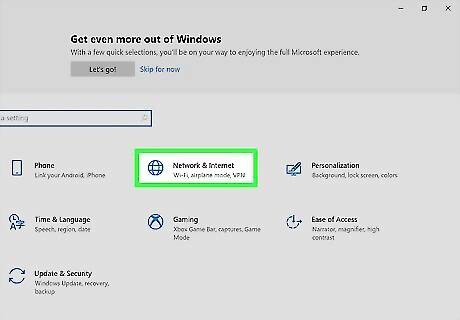
Click Network & Internet. On Windows 10, it's next to the wireframe globe. On Windows 11, it's in the menu to the left next to the Wi-Fi fan symbol.

Click Wi-Fi or Ethernet. If you are using a wireless internet connection, click Wi-Fi. If you are using a wired connection, click Ethernet. In Windows 10, both these options are at the top of the menu bar on the left side. On Windows 11, both these options are in the main menu near the top.
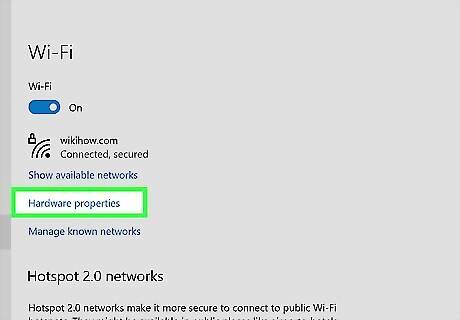
Click Hardware Properties. It's in the main menu on both Windows 10 and Windows 11.
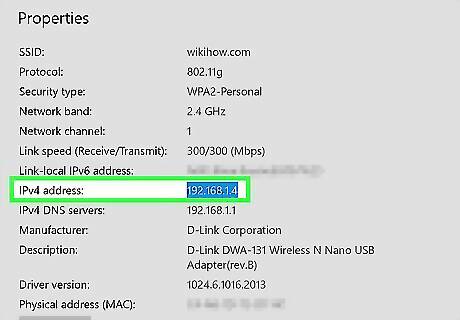
Check your local IP address. Your local IP address will be listed next to "IPv4 address" or "IPv6 address.". It'll be towards the bottom of the Hardware Properties information page.
Finding Your Local IP Address in Control Panel
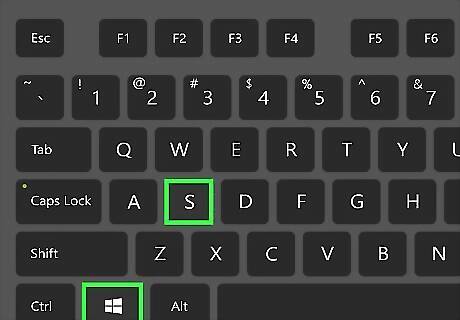
Press ⊞ Win+S to open the Windows search bar. You can also open it by clicking the magnifying glass or circle icon next to the Start menu or by clicking the Start menu itself. If you're using Windows 7, click the Start menu, select Control Panel, type adapter into the search bar, and then skip to step 3.

Type view network connections. As you type, a list of matching search results will appear.
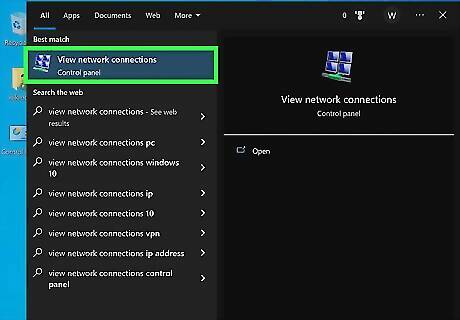
Click View network connections. It will be in the list of search results in the Search menu.
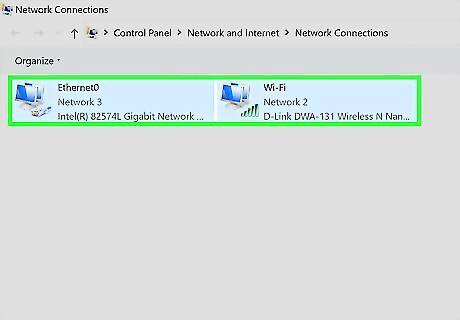
Double-click your active connection. Your active network connection will be the Wi-Fi or Ethernet connection that does not have a red 'x' next to the icon. For example, if you're currently connected via a wireless network, double-click the "Wi-Fi" connection to view its info.
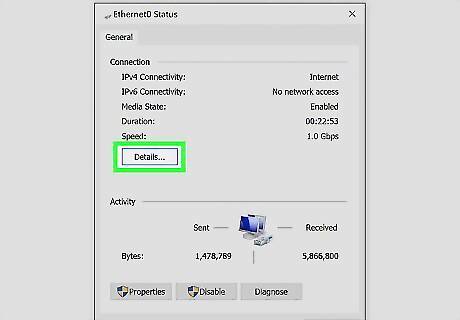
Click the Details button. You will find your IP address next to "IPv4 address" or "IPv6 address." If you're on a local network behind a router (common when connected to Wi-Fi), this address may be internal only. See the "Using Google" method to find out your public IP address.
Finding Your Local IP Address in Command Prompt

Open the Command Prompt. To open the command prompt, click the Windows Start menu and type CMD. Then click Command Prompt.
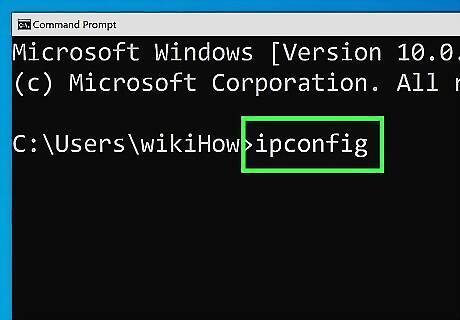
Type ipconfig and press ↵ Enter. This will display your network connection information.
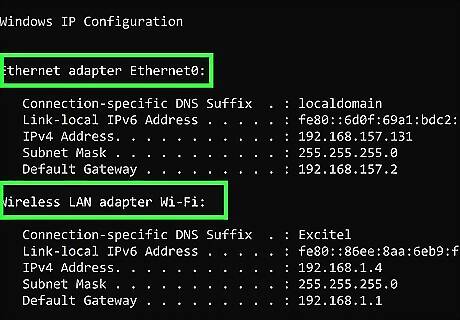
Find your active network adapter. Your active connection may be labeled Wireless Network Connection, Wireless LAN adapter, Ethernet adapter, or Local Area Connection. It may also be labeled by the manufacturer of your network adapter.
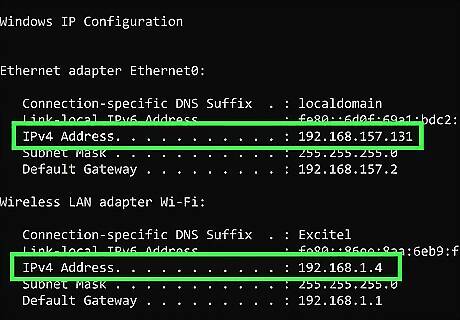
Locate your IP address. Your local IP address will be listed next to "IPv4 Address" or "IPv6 address" below your active network adapter. The IP address is four sets of digits, with up to three digits per set. For example, it might look like 10.0.0.1 If you're on a local network behind a router (common when connected to Wi-Fi), this address may be internal only. You can find your public IP address using Google. If you're behind a router, the router's local IP address is the one listed next to "Default Gateway."
Finding Your Public IP Address on Your Router
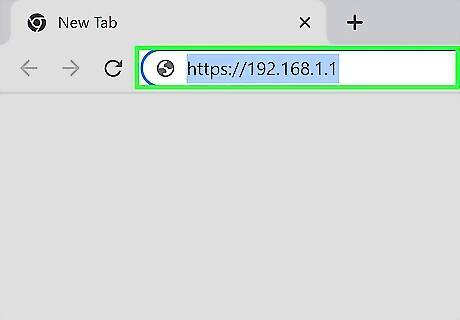
Open your router's admin page in a web browser. Almost all routers can be accessed through a web interface where you can see and adjust settings. Enter the IP address of the router in the address bar of a web browser. For example, you may type https://10.0.0.1 into your browser's address bar if that's the address of your router. Other common addresses are 192.168.1.1, 192.168.0.1, and 192.168.2.1. To find out the exact address of your router, use the steps described in this method to pull up the IP information. The router's IP address will appear next to "Default Gateway."
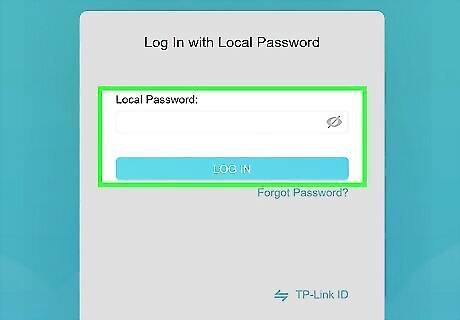
Log in as an administrator. The username and password combination varies by router make and model, but most are super basic if you haven't changed that information. Try some of these combinations for different router brands: Username: admin Password: admin Username: admin Password: password Username: admin Password: (leave blank) If none of these work, search for the name and model of your router on the internet along with the text "admin password."
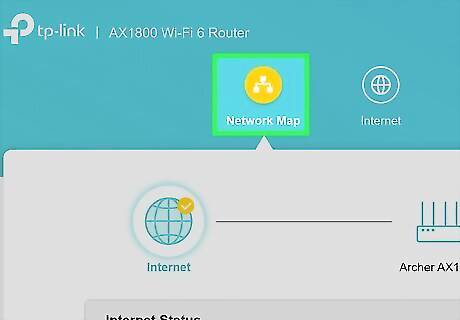
Open the Router Status, Internet, or WAN page. The name of the page may vary depending on the make and model of your router. Look for a page that displays your network information. If you are using a Netgear router with the Netgear Genie configuration software, click the Advanced tab.
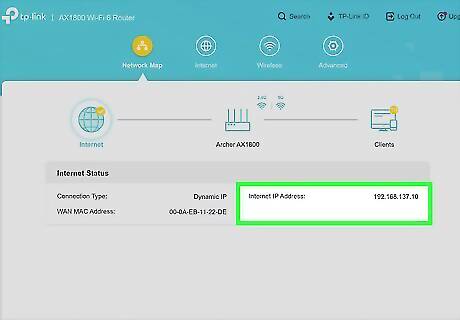
Look for "Internet Port" or "Internet IP Address." You should find it on the Router Status, Internet, or WAN page. The IP address is 4 sets of digits, with up to three digits per set, such as 199.27.79.192. This is the IP address that your router is assigned by the ISP. Most external IP addresses are dynamic, which means they change from time to time.
Finding Your IP Address on Linux
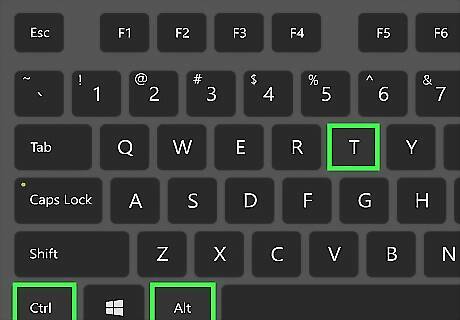
Press Ctrl+Alt+T to open the Terminal. You can check your local IP address using the Terminal. You can use the keyboard shortcut Ctrl + Alt + T to open the Terminal on most Linux distributions.
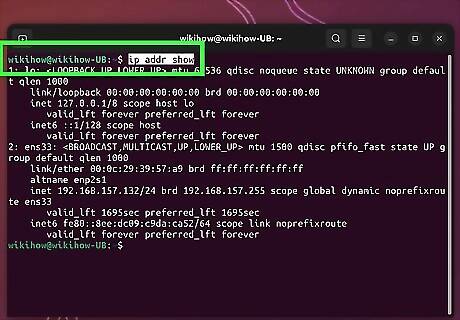
Type ip addr show and press ↵ Enter. This displays your internal IP address info, which is usually assigned to you by your local router. The IP address for each interface (Ethernet, Wi-Fi, etc.) appears next to "inet addr." If your computer is connected via Ethernet, the "inet addr" you're looking for us likely called eth0. If you're using Wi-Fi, it's likely under wlan0. The IP address will be four groups of up to three numbers, separated by periods. For example, it might look like 192.168.1.4
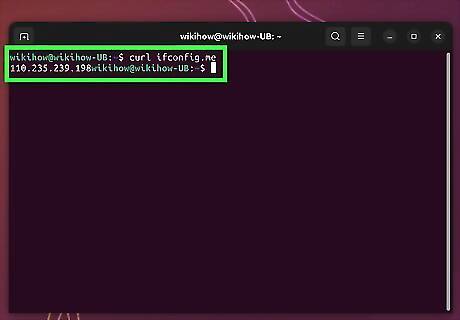
Type curl ifconfig.me and press ↵ Enter. This displays your public IP address, which is the external address assigned to you by your ISP.


















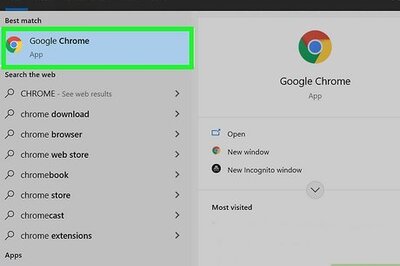

Comments
0 comment